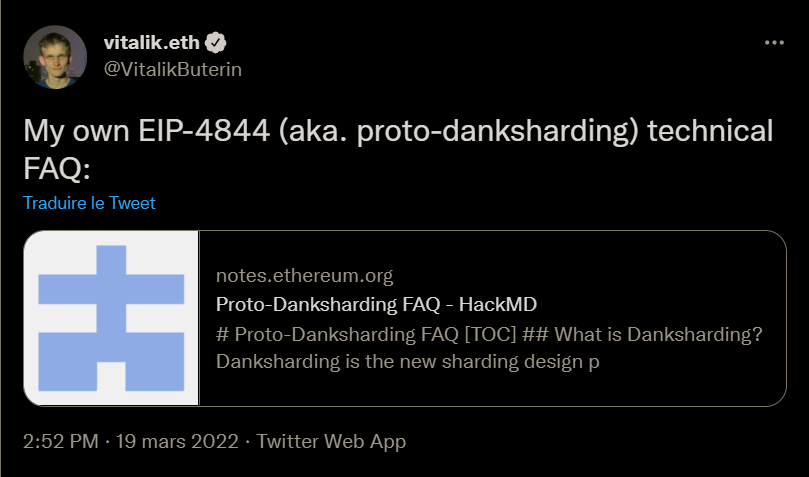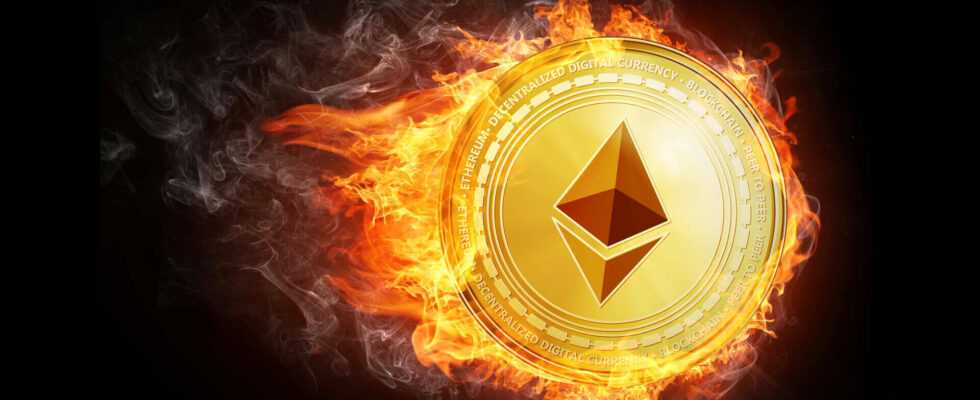Bring out the pitchforks and torches! – Last November, we were reporting the number of ETH burned since the implementation of the EIP-1559. In the space of 3/4 months, more than 1 million Ethers had left the network. Today we have doubled the number of units destroyed over the same period of time, or just over 6 billion dollars gone up in smoke!
Burn ETH!
As a reminder, EIP-1559 was an update to the Ethereum network that profoundly changed the system of rewards granted to validators. Indeed, when the blockchain was saturated, in particular because of the enthusiasm of cryptophiles for NFTs, the fees literally exploded! Network users were then ready to pay ever more for their transactions, so that these could be integrated into a block and be validated. Inevitably, the validators rubbed their hands, since they were encouraged to favor transactions paying the most fees. But the EIP-1559 came to update this system, which strongly displeased the validators.
Anyway, this update was done through the Hard Fork London and in the space of a few months, it was 1 million Ethers that went up in smoke! Ethereum’s deflationary process was in place.
Since then, water has flowed under the bridges and calmed the fire. We have even seen a drop in transaction fees on the Ethereum blockchain.
>> Do you want to anticipate future rises in ETH? Buy it on Kucoin! (affiliate link) <<
Sometimes the best solution is to leave no choice
Meanwhile, a turf war raged within the Ethereum community, as validators began to pressure developers in an attempt to delay the move to Proof-of-Stake. But that was without counting on the genius straight out of the brain of Vitalik Buterin. Indeed, although the Ethereum blockchain has always been intended to move to Proof-of-Stake, this process takes time. So much so that we are not even talking about Ethereum 2.0 anymore, but about The Merge update.
This update will aim to anticipate the transition from Proof-of-Work consensus mode to Proof-of-Stake. This transition has already been implemented on the Klin tesnet and aims to connect the execution layer of the Ethereum blockchain to the Proof-of-Stake consensus layer provided by the Beacon Chain.
Recently, Vitalik Buterin posted a tweet in which he talks about sharding, which will be the last step in the evolution of the Ethereum network. It’s not yet about sharding strictly speaking, but Vitalik clarifies the notion of Danksharding and Proto-Danksharding.

Roughly, the Danksharding will introduce a “merged fee market” where a proposer chooses all transactions and data then puts them in a block. As opposed to the current form where a fixed number of shards each have separate blocks and also separate block proposers. The Merge update is still scheduled for June. This will mark a milestone in Ethereum’s life cycle, which we hope will turn out for the best. If you want to go into more detail on the subject, we advise you to follow this link.
In view of the amount of transaction fees which are currently tending to decrease and the number of ETH burned. We can see that the craze is not empty around the blockchain Ethereum. If The Merge update goes smoothly and sharding comes into effect, we can imagine Ethereum’s unchallenged reign over DeFi.
If the turns on the Ethereum roadmap make you dizzy, there are other opportunities to earn attractive returns. ETH 2.0 staking without blocking your funds? On KuCoin Earn it is possible! Thanks to the ETH2 token, earn interest or trade freely. register now (affiliate link).
